Affiliate disclosure: This post may contain affiliate links. Please see our Privacy Policy.
Preserved lemons are an essential part of traditional North African cuisine, adding flavor far beyond what simple lemons can accomplish alone.
With just lemons and salt, the natural lactic acid bacteria present on the lemon peels go to work to both preserve the lemons and dramatically enhance their flavor.
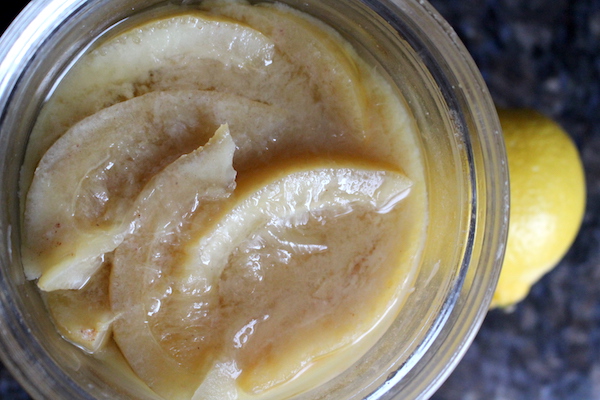
A splash of lemon juice finds its way into all manner of dishes in my kitchen, adding brightness and acidity to balance enhance and compliment the other flavors. Preserved lemons add more than just tart lemon acidity.
Imagine if you took the deep fragrant lemon oil scent of the zest, added a hint of bitter from the lemon pith, combined it with the bright tart lemon juice flavor and then added loads of salty umami to bring it all together. There you have it, a perfectly rounded lemon-y condiment that can be used in place of lemon and salt in just about any recipe, to create a completely different dish than lemon or salt could accomplish alone.
According to Michael Ruhlman in his book Charcuterie, Preserved lemon “adds a beguiling lemony-salty brightness to stews, curries, and sauces. It is amazing minced and tossed into a salad, or used to infuse olive oil for a vinaigrette or condiment….There may be no purer example of salt’s transformative powers than what it alone does to lemon.”
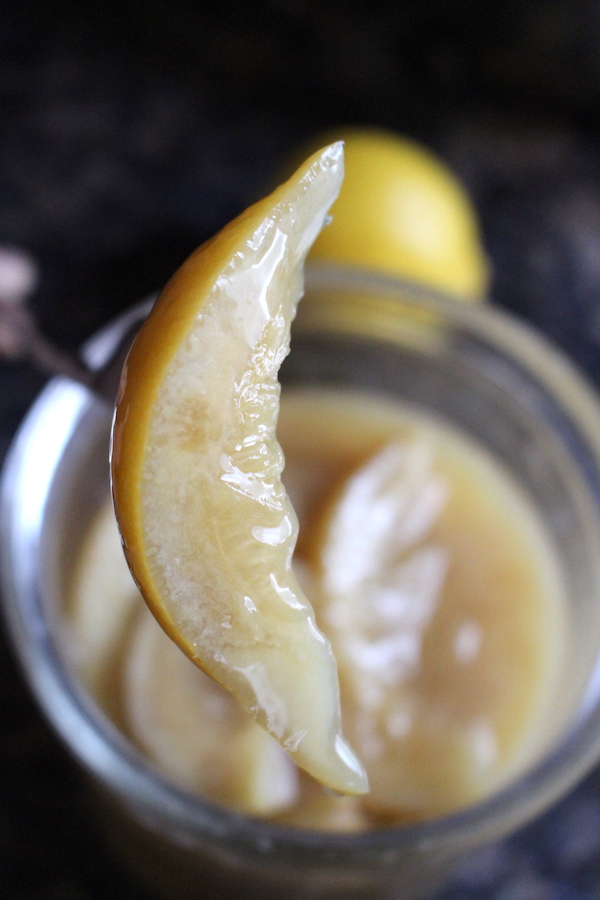
How to Make Preserved Lemons
Making preserved lemons is incredibly simple. For the most basic recipe, all you need is lemons and salt, along with a bit of patience. The basic process is to slice open the lemons and then pack them in salt.
After 24 hours they should release enough juices to cover themselves in brine, but if not, add more juice and salt to ensure they’re covered. Allow the mixture to cure for 3-4 weeks before using, and beyond that, they’ll keep almost indefinitely.
Slicing Lemons for Preserved Lemons
The first step in making preserved lemons is slicing the lemons. It sounds simple, but there’s some debate as to how the lemons should be sliced to make this particular preserve.
Most sources tell you to quarter the lemons, but leave a tiny bit of the rind attached at one end so they stay together. The lemons are then basically whole lemons that are just opened on one end so you can pack salt inside.
The presentation is beautiful in the jar, but the downside is that very few lemons will actually fit in a jar when left pretty much whole. Though I had relatively small lemons, I couldn’t quite get the 3rd one into a quart jar.
Beyond that, the lemons need to be covered in brine and the loser they’re packed, the more bring you’ll need in the jar. If the lemons are sliced finer, they’ll pack a bit tighter and produce enough lemon juice on their own to completely cover themselves. Left whole, you’ll have to add additional lemon juice and salt to keep them covered.
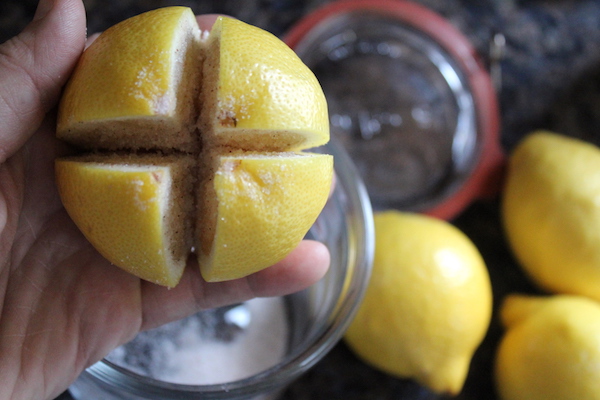
Other recipes call for slicing the lemons into 8ths and layering them into a jar with salt. This method allows you to fit far more lemons into a single jar and makes it so you don’t have to add any supplemental lemon juice to create a good brine.
It’s important that the lemons stay submerged during the process, and if they don’t produce enough juice on their own you’ll have to add more. When you add more juice, you’ll also add more salt and the ratio of zest/rind to juice/salt in the batch will be very different.
When you buy preserved lemons, they’re sold either way, whole or in 8ths with no distinction. Either way, when you go to use them the lemons are sliced, so sliced before or after the ferment doesn’t impact how they’re used. It does, however, change the presentation, and sliced lemons in a jar are somehow much less dramatic than whole lemons floating in a salty brine.
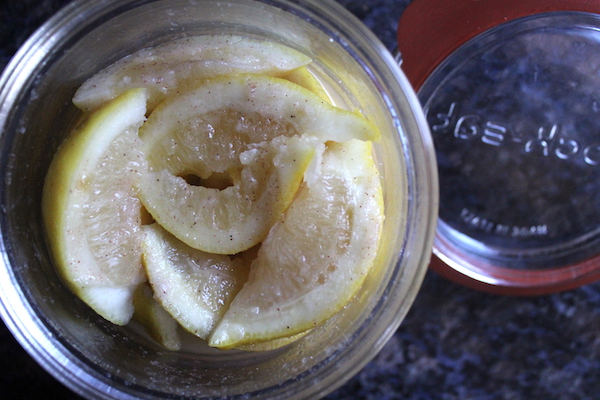
How Much Salt to Add to Preserved Lemons
The amount of salt varies from recipe to recipe. Some using as little as 1 tablespoon sprinkled inside each lemon, and others call for up to 1/4 cup of added salt per lemon.
So what’s the answer? Some.
Start with a minimum of 1 tablespoon of salt for each lemon. If you’re able to get the lemons to let out enough juice on their own, this is plenty of salt to create a good brine. If you need to add additional lemon juice to ensure the lemons are completely submerged, then add at least another tablespoon of salt per 1/4 cup of added lemon juice.
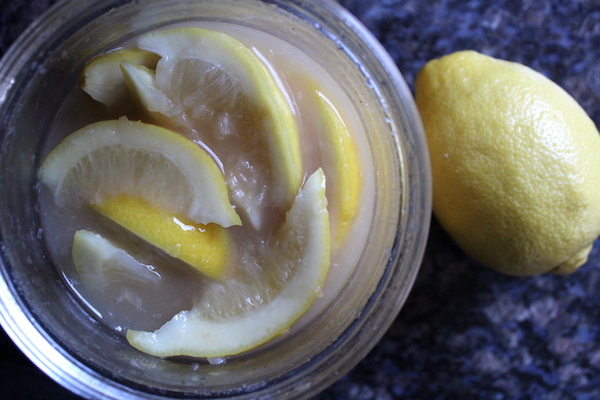
Curing Preserved Lemons
After the lemons are sliced and then packed in salt, give them about 24 hours to release their juices. At that point, if they’re not covered add more juice and salt to ensure they’re submerged in brine.
The lemons themselves are covered in natural bacteria that will culture in a high salt environment. Think of it like homemade sauerkraut, which is just cabbage packed in salt and allowed to culture. Realize that the preserved lemons are in fact a “live” food with natural probiotics present, just like yogurt.
As the lemons ferment in the salt cure, you’ll see small bubbles develop and work their way to the surface. The bubbling is nowhere near as active as many other vegetable ferments, and you don’t need to attach an air escape like a silicone water lock for preserved lemons (though you can if you want). Simply remember to burp the jar every week or two.
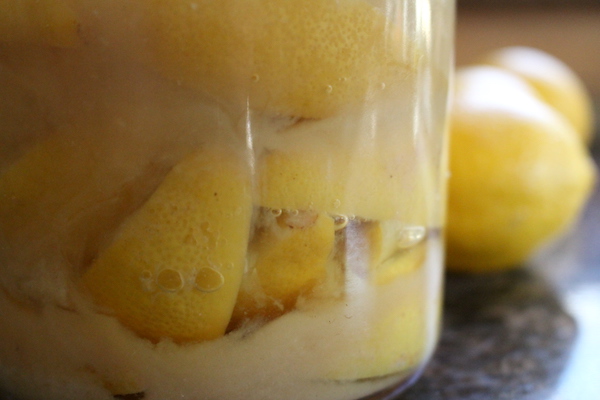
Preserved lemons need a minimum of 3 weeks to cure, but ideally, they’d be cured for at least 2-3 months to develop more flavor.
Some sources say that during this curing period, the lemons should be kept in the refrigerator. That’s part of an abundance of caution and the modern mindset that food just can’t be safe if it’s outside of refrigeration.
Know that refrigeration is very new, and it’s still not present in many of the areas where preserved lemons are traditionally made and used. They will culture just fine at room temperature on your countertop, and the only reason to refrigerate them is to slow the curing process down.
How to Store Preserved Lemons
Once the lemons are as cultured as you like, go ahead and put them in the fridge if you want. Or don’t.
My preserved lemons are still hanging out on the counter in their salty brine, and that’s where they’ll stay until they’re completely used up. The instructions in the book Charcuterie don’t call for refrigeration at any point in the process.
The book calls for the lemons to be packed in salt, and then tells you to “cover and store in a cupboard or other dark place for at least a month, preferably 3.” The author also notes that “Once cured, the lemons will keep almost indefinitely in the salt.”
Remember that when you’re making preserved lemons you are employing natural bacteria to transform the lemons into a tasty condiment, but you’re also using a technique that has been used for millennia to preserve food without refrigeration.
How to Use Preserved Lemons
Though preserved lemons are a staple of traditional Moroccan cuisine, there’s no reason they need to be kept confined to recipes from North Africa. Generally, when using preserved lemons, the “fruit” part inside the lemon is scraped out and discarded, and the cultured lemon rind is added to recipes. The peels themselves have softened, and they’re either added during cooking and removed to serve, or diced up and eaten as part of the dish.
Sometimes, instead of using the whole preserved lemons themselves, the lemony preserving brine is added to dishes. The brine thickens a bit during the curing process as the bacteria work their magic. When the lemons are done, the brine has been transformed into a salty lemony glaze full of probiotic goodness.
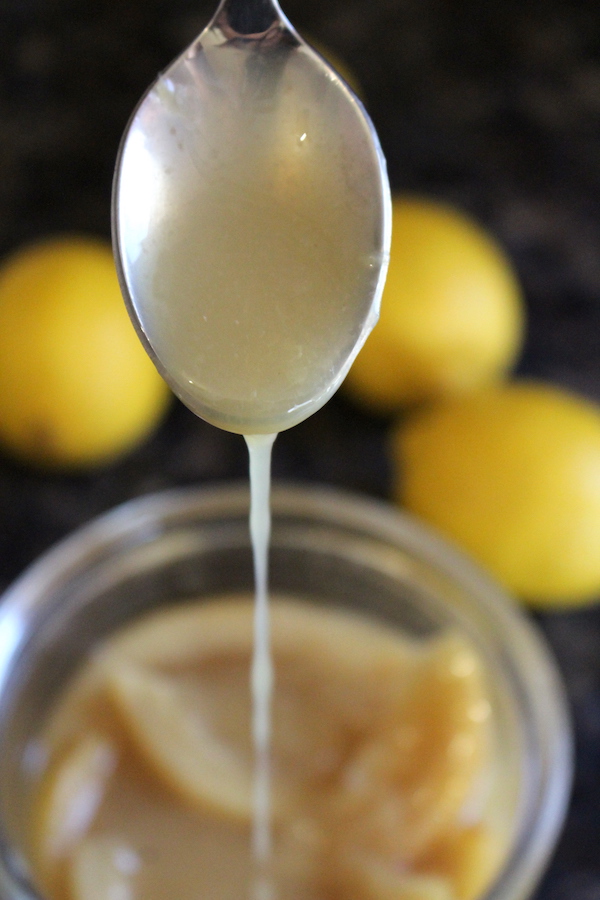
Vegetarian Recipes Using Preserved Lemons
Since preserved lemons add a lot of umami flavors, they’re perfect for rounding out vegetarian recipes.
- Lemony Sweet Potato Tagine
- Vegetarian Instant Pot Moroccan Stew
- Couscous Salad with Chickpeas and Preserved Lemon
- Pearl Couscous with Preserved Lemon
Chicken and Fish Recipes Using Preserved Lemons
Preserved lemons go wonderfully with chicken and fish, and anywhere else you’d add lemon flavor.
- Moroccan Roast Chicken with Preserved Lemons
- Skillet Chicken with Lemon and Olives
- Chicken with Potato and Preserved Lemon Tajine
- Preserved Lemon and Caper Shrimp
Dessert Recipes Using Preserved Lemons
That’s right, preserved lemons can add depth of flavor to drinks and desserts too. Used in place of lemons and salt, preserved lemon adds more flavor than salt and lemon alone.
- Lemon Vanilla Almond Ghriba Cookies
- Preserved Lemon and Almond Cake
- Strawberry and Preserved Lemon Lassi
- Plum Jam with Preserved Lemon
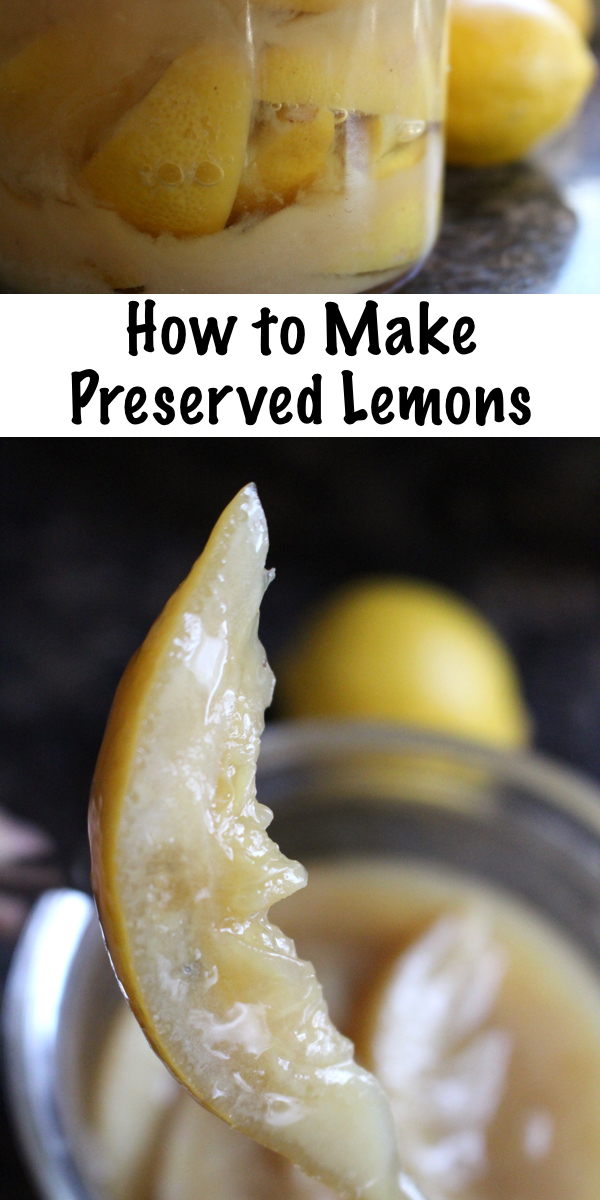
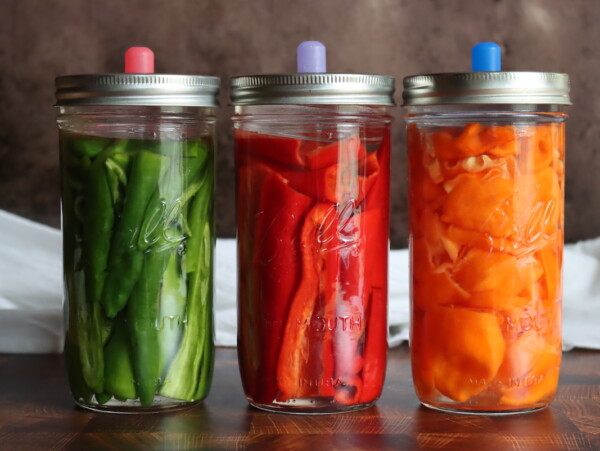
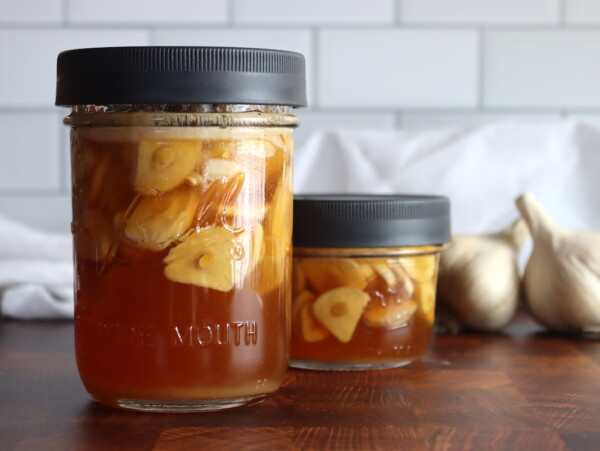
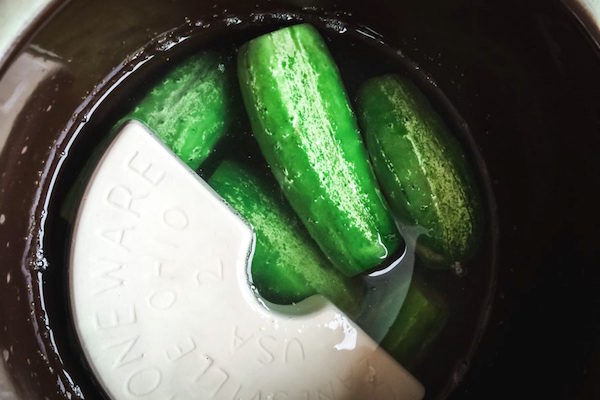
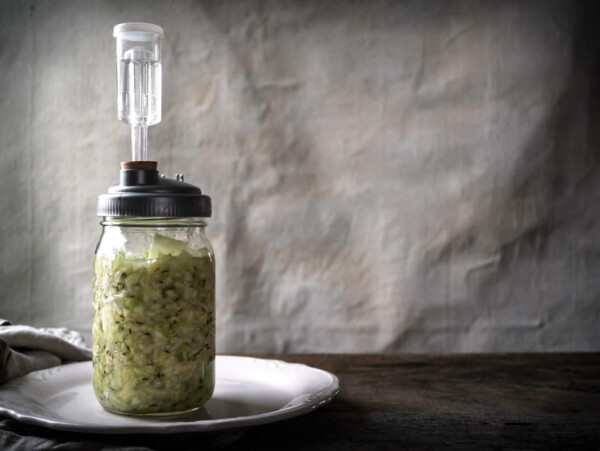
The one time I had preserved lemons was as part of a charcuterie board in which it was preserved lemon purée mixed with fresh thyme lease, olive oil and red pepper flakes. Feta was set to marinate in the mixture and it was phenomenal. I have been wanting to preserve lemons ever since. Thanks for the instructions and the deatails!
You’re quite welcome!
Does is matter what type of salt that you use? Himalayan pink salt or sea salt ok?
Either of those should work fine.
Real Sea Salt is best. Think Sea Salt from Normandy or comparable. Kosher salt works too. Just avoid table salt as the granules are too small and dissolve toob quickly. Just pack the cut lemons. Best Lemons for this come from Morocco or Sardinia, in Italy.
Amazing. I have been using fresh lemons in my Indian curry recipes. Only recently started Tajine Cooking and your Lemon Confit tutorial is perfect! Sauerkraut is another Fav so I’ll try that next. I assume Encurtido Salvatoreño is similar? Cheers
Yes indeed! I absolutely love Encurtido Salvatoreño, there used to be a vendor that sold pupusa at the farmer’s market near us and we started making them ourselves, along with curtido. It’s the exact same process as sauerkraut, just different ingredients/spices to create that unique flavor.
Great information! Thanks for including my recipe!